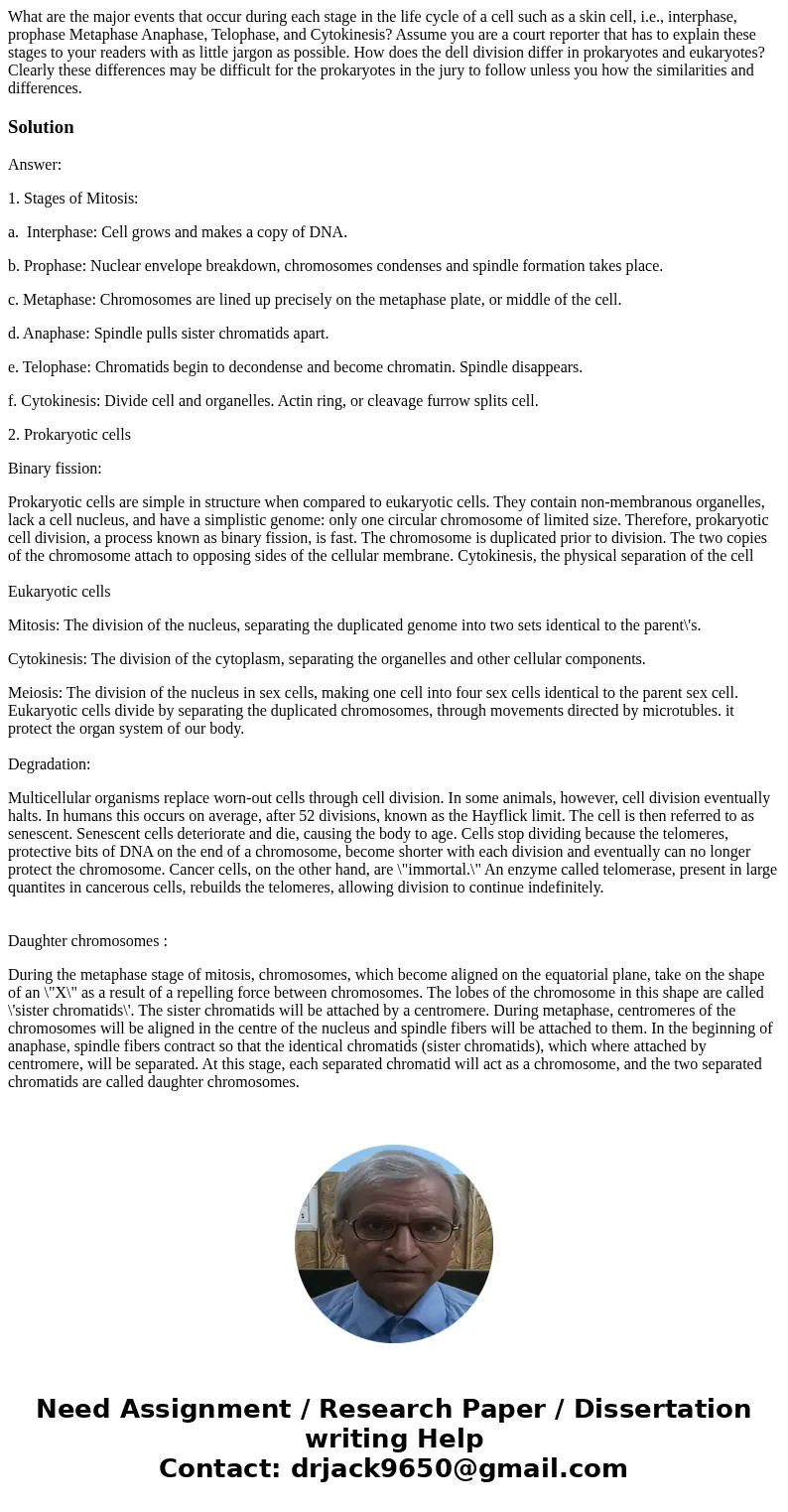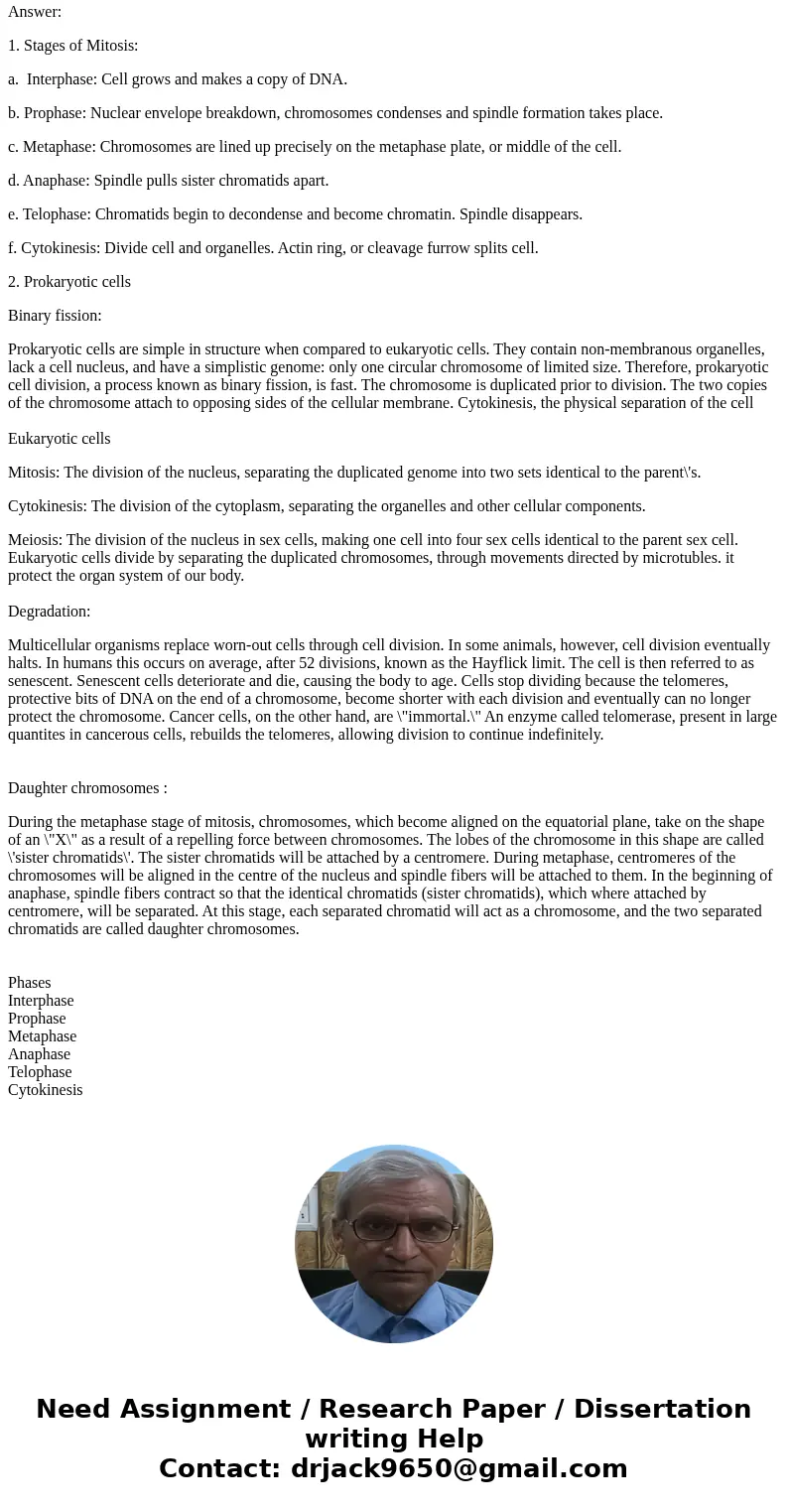What are the major events that occur during each stage in th
Solution
Answer:
1. Stages of Mitosis:
a. Interphase: Cell grows and makes a copy of DNA.
b. Prophase: Nuclear envelope breakdown, chromosomes condenses and spindle formation takes place.
c. Metaphase: Chromosomes are lined up precisely on the metaphase plate, or middle of the cell.
d. Anaphase: Spindle pulls sister chromatids apart.
e. Telophase: Chromatids begin to decondense and become chromatin. Spindle disappears.
f. Cytokinesis: Divide cell and organelles. Actin ring, or cleavage furrow splits cell.
2. Prokaryotic cells
Binary fission:
Prokaryotic cells are simple in structure when compared to eukaryotic cells. They contain non-membranous organelles, lack a cell nucleus, and have a simplistic genome: only one circular chromosome of limited size. Therefore, prokaryotic cell division, a process known as binary fission, is fast. The chromosome is duplicated prior to division. The two copies of the chromosome attach to opposing sides of the cellular membrane. Cytokinesis, the physical separation of the cell
Eukaryotic cells
Mitosis: The division of the nucleus, separating the duplicated genome into two sets identical to the parent\'s.
Cytokinesis: The division of the cytoplasm, separating the organelles and other cellular components.
Meiosis: The division of the nucleus in sex cells, making one cell into four sex cells identical to the parent sex cell. Eukaryotic cells divide by separating the duplicated chromosomes, through movements directed by microtubles. it protect the organ system of our body.
Degradation:
Multicellular organisms replace worn-out cells through cell division. In some animals, however, cell division eventually halts. In humans this occurs on average, after 52 divisions, known as the Hayflick limit. The cell is then referred to as senescent. Senescent cells deteriorate and die, causing the body to age. Cells stop dividing because the telomeres, protective bits of DNA on the end of a chromosome, become shorter with each division and eventually can no longer protect the chromosome. Cancer cells, on the other hand, are \"immortal.\" An enzyme called telomerase, present in large quantites in cancerous cells, rebuilds the telomeres, allowing division to continue indefinitely.
Daughter chromosomes :
During the metaphase stage of mitosis, chromosomes, which become aligned on the equatorial plane, take on the shape of an \"X\" as a result of a repelling force between chromosomes. The lobes of the chromosome in this shape are called \'sister chromatids\'. The sister chromatids will be attached by a centromere. During metaphase, centromeres of the chromosomes will be aligned in the centre of the nucleus and spindle fibers will be attached to them. In the beginning of anaphase, spindle fibers contract so that the identical chromatids (sister chromatids), which where attached by centromere, will be separated. At this stage, each separated chromatid will act as a chromosome, and the two separated chromatids are called daughter chromosomes.
Phases
Interphase
Prophase
Metaphase
Anaphase
Telophase
Cytokinesis


 Homework Sourse
Homework Sourse